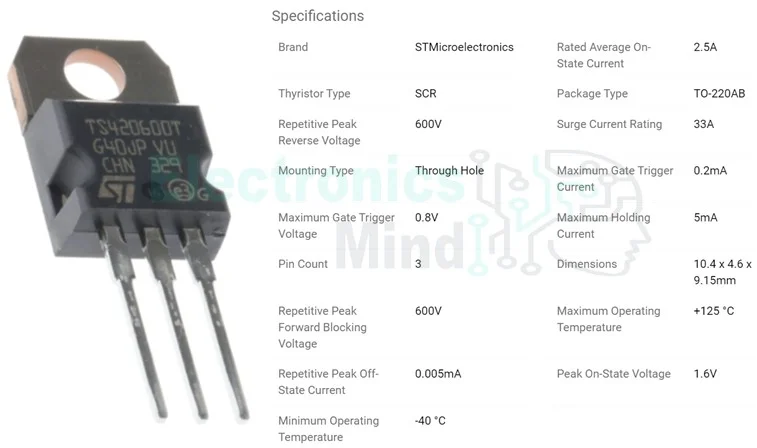All thyristors will have their own capability and they must be operated in their definite capability limits known as ratings. If a thyristor is operated even for short time above its ratings, it will result in failure or loss of control of the operation. Therefore, for the reliable operation of a thyristor, it should be operated within its specified ratings.
In this article let us learn about thermal or temperature ratings of thyristor or SCR. The main thermal or temperature ratings of thyristor or SCR are,
- Junction Temperature,
- Transient Thermal Resistance.
Junction Temperature :
The junction temperature of an SCR is denoted by Tj and is expressed in degrees centigrade (°C). A thyristor can block the forward voltage which is applied between its cathode and anode terminals and can maintain its forward blocking state up to a specified limit of junction temperature.
Hence, when the temperature of the junction increases above this specified limit, the SCR automatically switches from OFF-state to ON-state even without the application of the gate signal. Therefore, the junction temperature is an important parameter, since it decides the maximum current for an SCR that can be controlled and carried over a significant period of time.
The junction temperature has two limits, the lower temperature limit, and the upper operating limit. The lower limit is usually specified so that the thermal stress in the silicon crystal can be limited to a safe value. The thermal stress is due to the variation in the thermal coefficients of expansion of the material that is used in the fabrication of SCR.
The upper limit of operating temperature is specified because of the temperature dependence of the break-over voltage, turn OFF times, and thermal stability.
Transient Thermal Resistance :
The resistance which is present between the junction of SCR and its cooling surfaces (thyristor case, heat sink, and surrounding ambient fluid) is called thermal resistance. The thermal energy flows from the junction at high temperature to the junction at low temperature.
The transient thermal resistance or simply the thermal resistance of a thyristor is denoted by θ and is expressed in degree centigrade per watt (°C/W). It is inversely proportional to the size of the thyristor.
If ‘P’ represents the average power loss at junctions, Tj represents the junction temperature, and TA represents the ambient temperature of the fluid, then the thermal resistance between the junction and the ambient fluid is given by,
In the above equation, θj-A is the sum of the following thermal resistances, - θj-C = Junction to thyristor case
- θC-S = Thyristor case to heat sink
- θS-A = Heat sink to ambient fluid.
Therefore,

